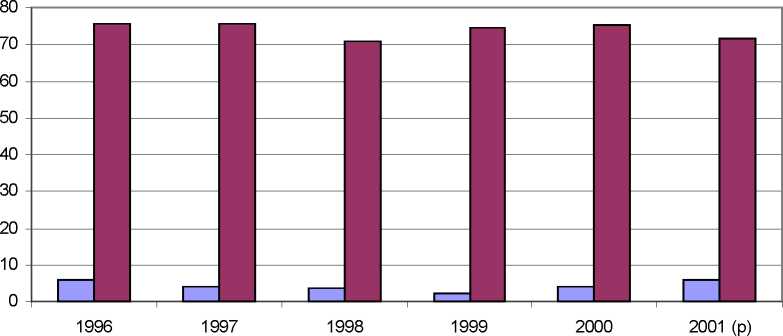improvements on access to rural areas. Households without access to electricity in rural Bolivia
still stands at well over 70%, and it has not changed much since 1996.
Figure 3.4
Urban and Rural Residents Without Electricity (%)

□ Urban without □ Rural without
Source: INE
When income considerations are included to analyze coverage in different areas of the country,
patterns of behaviour in both urban and rural Bolivia are confirmed. Specifically, urban coverage
seems to be increasing throughout, even for the poorest groups, while rural coverage - for the
most part - declines or remains stationary, especially in the poorest sectors. Figure 3.5 below
illustrates access to electricity between the years 1997 and 1999 for the four lowest income
groups in both urban and rural areas.
13
More intriguing information
1. The name is absent2. CGE modelling of the resources boom in Indonesia and Australia using TERM
3. Placenta ingestion by rats enhances y- and n-opioid antinociception, but suppresses A-opioid antinociception
4. Globalization, Divergence and Stagnation
5. Are class size differences related to pupils’ educational progress and classroom processes? Findings from the Institute of Education Class Size Study of children aged 5-7 Years
6. Reconsidering the value of pupil attitudes to studying post-16: a caution for Paul Croll
7. Effort and Performance in Public-Policy Contests
8. Public-private sector pay differentials in a devolved Scotland
9. Portuguese Women in Science and Technology (S&T): Some Gender Features Behind MSc. and PhD. Achievement
10. The name is absent